Post Highlights
» Why I shoot for one and only one snow map for each event
» The evolution of the snow forecast for December 10th into 11th, 2023
» Analyzing the results of the forecast
» Thank you for supporting FLX Weather through the annual calendar sale
—
Meteorology is a science. As such, it should follow the scientific method.
Observations are collected, hypotheses (forecasts) are made, and the results need to be analyzed. Every so often, I like to publish my methodologies and share some thoughts on the results. This is a great learning opportunity for all of us.
Forecasting Philosophy
There is nothing in meteorology that generates more buzz, views, and comments than a snow map. Even for minor events, there is just something about having a map with expected snow accumulation on it that catches attention.
I have been publishing local snow maps for over 15 years, so I have developed a process and philosophy around making snow maps.
Whenever possible, I like to make one and only one snow map for each event. Occasionally I will make a pre-map which simply highlights the areas of greatest concern. But when it comes to numbers, I stick to just one map whenever I can.
There are two reasons for this:
- Clarity — Producing one snow map gives you, the reader, a single set of numbers to consider.Too many other forecasting services change their numbers every few hours. For Sunday night’s snow event, another local weather provider published five different snow maps on Facebook over the weekend.
With social media algorithms, some people saw only the first map, some only the second map, and so on. Shares of those posts then went out even further, making later views of maps 1-4 confusing, obsolete, and not representative of the current information.
Publishing one and only one map per event removes this confusion and gives clarity to the situation.
- More to Forecasting than Models — Many other weather forecasts, snow maps included, are simply a regurgitation of model data… or at best, a regurgitation of a blend of several models. These maps and forecasts have minimal to no human forecasting involvement.As each new suite of model data comes in, the maps get changed semi or completely automatically.
In contrast, when I make a single snow map, I must look beyond the latest model data and actually forecast the weather. I use model data, of course, but it is far from a blind adherence to what the computer says.
I rely on my knowledge of meteorology, my insight into the terrain and microclimates of our region, my experience from over 15 years of forecasting snow in our region, and my understanding of the computer model strengths, weakness, and trends.
After many days of behind-the-scenes forecasting, I hand draw my map. Every bump, curve, bubble, and line on my map is a deliberate choice on my part. Sometimes, I agonize over the smallest details, revising lines over and over again until they look and feel just right.
I do not usually have to worry about what the models will look like after I make my map, because I have already done my homework understanding the meteorology and anticipating what future models runs will look like.
Even making a single map isn’t good enough, though.
A map serves as a good general guide, but it only tells a small part of the story. On the maps themselves, I always note my forecasting confidence, often note the associated travel hazards, and frequently add in a few annotations for extra information.
That, of course, is then followed up by a detailed blog post. I never simply post a map and leave it at that. I often write hundreds of words explaining the map, detailing the evolution of the winter weather event, and stressing the fine details of the weather system that will influence snow amounts.
For me, making a snow map is a process that starts days in advance. It is a long and laborious process. And it should be. With the attention given to a snow map, and knowing that for many people, a quick glance at the map is the only information that will get about an event, it is vitally important to do the job right.
Sunday Night’s Snow Event
Let’s look a bit closer at this past snow event, which occurred at night on December 10th into December 11th, 2023, and see what can be learned from it.
The first substantial signs of snow started to show up mid-week, when models jumped east with a low pressure system that they had originally placed to the west over the Great Lakes. Some of these initial model runs were impressive, showing 1-2 feet of snow in our area. However, other models at the same time had very little to no accumulation.
For me, the high snow totals alerted me to look for further trends in the models that would point towards a higher end snow event. But I remained skeptical it would come to pass. In my post Thursday morning, I said:
“There is still a large spread in the possible snow amounts, but the most likely scenario is for a couple of inches Sunday night. There are certainly paths to higher amounts, so this bears close watching. There are also paths to little to no accumulation, though.” [Link to the Thursday blog post]
As the weekend approached, the higher end snow amounts on the models faded off. This is a common occurrence on the models, which tend to over-predict the strength of storm systems when they are still more than a few days out.

This is partly because the energy that will eventually spawn the system is still out over the Pacific Ocean. There is very sparse observational data over the Pacific, so the models do not get a good feel for the atmospheric setup until the action moves inland over North America, which typically happens 2-4 days before it impacts our area.
In the lead up to this event, it became clear that temperatures would be on the warmer range of what is possible for snowfall, complete with a changeover from rain. Add in bare ground and several prior days of warm temperatures and rainfall, and the snow would also have to overcome warm ground conditions.
In such situations, weather models often overestimate snow amounts. I have noticed in recent years that the skill of the models has improved in this area, but it is still a notable bias.
This bias, and the overreliance on models I explained above, is why my snow amounts are often lower than other forecasts in these types of events… lower even to the point of mockery on social media from those unfamiliar with my methodology and too lazy to bother reading my associated blog posts, where I frequently discuss this very bias.
By Saturday, it was time to make a snow map. Since I was also selling calendars at Lime Hollow in Cortland that day, I had to take my forecasting on the road. While at my booth, I created my snow map, even showing it in-process to some customers.
Elevation is key in these events, and I often use an elevation map as a guide. Even then, however, it is only a guide. As always, there were many deliberate decisions that went into the map Saturday afternoon.
The End Result
Overall, this latest winter weather event went as expected. Rain Sunday turned to snow Sunday night. After initially darting east, the precipitation expanded back to the west as low pressure strengthened and passed by. However, temperatures were too warm for more than a coating of snow outside of the southeastern Finger Lakes.

For the areas that did see snow accumulation, elevation was a major factor. Areas above 1200 feet, generally speaking, saw a few of inches of accumulation. Areas below saw anywhere from a coating to two inches. A few areas, especially in Cortland County, got four or more inches.
This followed the pattern on my map and in my associated blog post very closely. Given that I stressed the elevation effects, small-scale variations, the inherent uncertainties, and the fact that the snow map was a guide and not the end-all-be-all for every location, I think the forecast was as close as could have been hoped for. [Link to the Saturday Blog Post]
If anything, however, I would say my amounts were still just a little too high. Even though my forecasts are usually lower than others in these situations, and sometimes substantially so, I still tend to end up shooting a bit high compared to what actually happens.
Moving forward, this gives me a little more confidence to keep pushing the boundaries by going lower on snow amounts in these situations. However, I would rather be a little too high with my forecast and have people be prepared than to undercut an event and leave people in a bad situation.
Obviously, getting it exactly right, everywhere, all the time is ideal… but it is also impossible. So, I will continue to do my best to get as close to that as possible. There will be forecasts that are further from the mark than this one. It is inevitable. It is science.
But, with the scientific method in hand, every forecast that gets analyzed is an opportunity to learn more, and all of that experience and knowledge gets incorporated into future forecasts.

Thank you for taking the time to read this, and for patronizing Finger Lakes Weather.
My services are funded entirely by donations, local business sponsors, a few local media clients, and my annual calendar and almanac sale.
My 2024 Calendar and Almanac is on sale for only a few days more. I put the same effort and attention to detail into the calendar as I do with my forecasts… so if you have appreciated this post, I think you will love the calendar as well. It is full of interesting local weather information and stunning local photos sent in by my viewers.
You can read more about the calendar and order your copy at https://flxweather.com/product/weather-calendar. But hurry! Sales end on Friday.
Please continue to spread the word about Finger Lakes Weather to your friends, family, and social media followers and groups!


Suzanne Hinderliter
Hi Drew,
I so appreciate your candid remarks about making a snow map and what goes into making it. The plain English approach for those of us who are not meteorologists is stellar. I hope you continue to thrive and definitely enjoy those 4 little boys and family life.
I’m looking forward to hanging up your latest calendar.
Happy holidays,
Suzanne Hinderliter